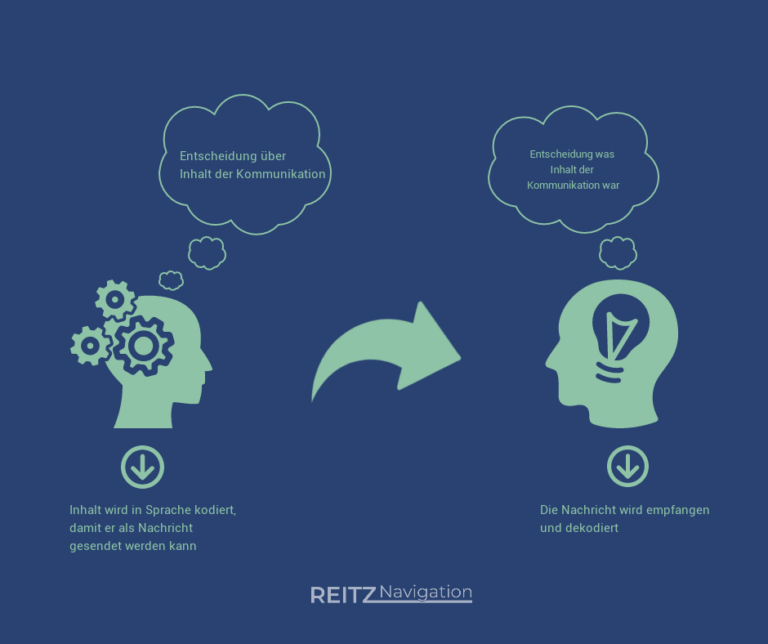
COMMUNICATION IN REMOTE WORKING TEAMS:
BETTER COLLABORATION IN DIGITAL TEAMS THROUGH THE RIGHT KIND OF COMMUNICATION
“You cannot not communicate.”
Paul Watzlawick
You have probably all heard this sentence, read it or even had it explained to you in communication seminars. However, we usually only realise the importance of this simple sentence when we are actively involved in situations where communication does not run so smoothly. Especially now and in the course of the last year, most of us have noticed how important successful communication is in remote working teams. This is because decentralised working has digitalised work processes and therefore also communication within companies. Have you also noticed that this new type of communication is sometimes not so easy for you in your everyday working life? Then read on. Besides a short introduction to the basics of communication, we would also like to give you valuable information, tools and methods that will help you to master communication in the digital world of work and thereby increase your health in your everyday working life!
COMMUNICATION AS A HEALTH FACTOR
What does communication have to do with health? Humans are social beings, we need to interact with other people and we feel good when we manage to make ourselves and our concerns understood to others. In this way we build positive relationships and connections with our fellow human beings and this maintains and promotes our health.
Communication means first of all that we want to exchange messages. Especially in a professional context, it is important that individual employees can communicate well with each other, with managers and externally for a company. If communication works well, i.e. if messages are understood the way the communicator wants them to be understood, cooperation within teams and organisations functions well and contributes to the creation of a good working environment for social health.
Unsuccessful communication leads to misunderstandings and conflicts. These are emotionally charged and lead to a bad atmosphere and stress within the team or between managers and employees. This leads to stress, which in turn promotes (mental) illness. Especially when communication takes place via digital channels, misunderstandings often occur. Why this happens can be explained with a few theoretical basics of communication.
THE BASICS OF COMMUNICATION
Since communication is a multi-layered concept, there are many models, theories and branches of research that deal with it. We have summarised the most important basics for you here.
THE SENDER-RECEIVER MODEL ACCORDING TO SHANNON AND WEAVER
In 1948, the mathematician Claude Shannon, while employed by an American telephone company, created a model that was supposed to represent the transmission of signals without interference.

This technical model shows how a message is first sent to the transmitter, which then encodes it so that it can be received by the receiver. The receiver then decodes the message and forwards it to the destination. The flash represents possible sources of interference in this process. Warren Weaver adapted this model in 1949 and used it to explain human communication. However, this is not so simple, because we as humans are not predictable machines, but multi-layered and in many ways unpredictable. That is why such a technical-mathematical model applied to our human communication can look something like this:

THE COMMUNICATION CHANNELS
In addition to the content, the channel on which we send and receive, i.e. communicate, is also crucial. A basic distinction is made between 3 channels:
- Acoustic channel: Everything we can hear. This includes speech, singing and noises such as clapping.
- Optical channel: Everything we can see. This includes especially our facial expressions and gestures, but also written texts and pictures.
- Tactile channel: Everything we can feel. This means, for example, greetings by handshake or hug.
Communication, as long as it is not digital, often takes place on all 3 channels simultaneously. In addition, the levels on which we communicate play an important role.
THE OBJECTIVE LEVEL AND THE INTERPERSONAL LEVEL
Facts and figures are sent on the objective level, while emotions and instincts are conveyed on the interpersonal level. Interestingly, most of our interpersonal communication takes place on this interrelational level, even if our message is primarily about facts. We send these along on all channels, often unconsciously. Probably most of us know a situation in which a colleague talks about factual content, but we notice very clearly through body language and tone of voice that the real message is emotional. By the way, it is often the case that the factual level is communicated verbally, i.e. through language. The interpersonal level, on the other hand, is conveyed non-verbally, i.e. through gestures, facial expressions and tone of voice.
EXPERT KNOWLEDGE
We often underestimate the importance of non-verbal and paraverbal communication. Paraverbal communication refers to the entire spectrum of the voice used to communicate:
- Voice pitch (high-low-firm-trembling)
- Emphasis
- Voice melody (monotone – singing – modulated)
- Volume
- Speech tempo
- Articulation (clear – unclear)
COMMUNICATION WITH REMOTE WORKING TEAMS
Especially in the last year, the majority of communication in the work environment took place via digital communication platforms, programmes or by phone. Teams, Slack, Zoom, Skype or messengers such as Whatsapp and Threema are now standard in almost all organisations. However, this type of communication differs significantly from face-to-face communication, to which the theoretical foundations of communication refer.
Because with this type of communication, there is always a medium in between. Even in supposedly direct video chats, we only see a screen with a transmission from our communication partner. On the one hand, this extra medium makes our communication more prone to interference due to technical difficulties, and on the other hand, it also makes it more difficult to transmit a message and to receive it, i.e. to understand it. This is because we are missing decisive factors of human communication in this type of communication.
What usually is left behind is what makes up a large part of interpersonal communication: the transmission and understanding of emotions. This level of communication, which is present in a face-to-face conversation due to the physical proximity of the people communicating, is unfortunately often lost without direct contact. It is expressed through non-verbal and para-verbal communication and takes place on the interpersonal level of communication. Yet this is the aspect of communication that significantly influences our social health. It is what we somehow lack since we work remotely and what can make us feel out of touch with our team and superiors.
TIPS FOR PROMOTING HEALTHY COMMUNICATION IN DIGITAL WORK ENVIRONMENTS
What you can do to improve your communication in digital work environments is summarised here in two handy checklists.
THE BASICS OF HEALTHY DIGITAL COMMUNICATION
- Agree on firm rules within the team and with your superiors. Clearly define until when you can be reached and which channel you prefer. If your smartphone rings and a video call comes in at the same time, it can cause stress.
- Set fixed times for video conferences. Video chats are the closest thing to real communication as you can at least see each other. Being able to see and hear your colleagues and supervisors at set times builds cohesion and trust within an organisation.
- Determine which tools are used for what. Each organisation should determine which communication platforms and programmes are used. Too many different messenger services and platforms create stress and overwhelm.
- Know your tools. It is important to know how to use new communication tools. Get support from your organisation and ask if you are unsure about how to use programmes.
- Set up your workstation correctly. A misaligned camera can be embarrassing at an important client meeting. So make sure your hardware is set up properly and that there is a light source.
- Planning is everything. Plan your daily schedule and your meetings. Whether you are running the meetings or attending them. Prepare properly so that you can communicate clearly and in a structured way in the meeting.
SUCCESSFUL COMMUNICATION IN VIDEOCONFERENCES
- Determine length and content and communicate clearly. This is a particularly important advice for organisers of online meetings. Make sure that your video conferences start and end on time and that there is a clear agenda. This also provides structure for the meeting, as it can be referred to again and again. Always remember to take breaks. A video conference should not be longer than 90 minutes unless a long lunch break is planned.
- Make greater use of non-verbal communication. In virtual communication situations, parts of non-verbal communication such as smell, haptics and touch are omitted, which is why it is all the more important that the remaining non-verbal levels such as gestures, facial expressions and gaze are used more clearly. Through them we create a feeling of connection and prevent boredom in our communication partners. Extra tip: Choose a larger picture and show more of your upper body. This way, more of your gestures and posture can be transmitted. So pay special attention to your posture, facial expressions and gestures and also try to communicate through eye contact.
- Train your voice. You can be as enthusiastic as you like about your topic, but if you present your content in a monotonous, quiet and insecure voice in the video conference, this enthusiasm will not come across to your colleagues and superiors. Tip: Laugh before you start speaking. A smile can be heard in the colour of your voice and it makes you and your message seem more positive.
- Speak clearly and in short sentences. Make sure you communicate clearly and concisely. Avoid filler words and long sentences. Irony and sarcasm are also rather inappropriate, as they are often not transmitted correctly digitally. Repetition and follow-up questions also help to create a clear communication situation.
- Use interaction in your meetings. Especially if it is a long meeting in which different departments or their representatives have their say, it is worthwhile to include small interactions. For example, in most video conferencing tools you can create small virtual rooms in which small groups can discuss a certain topic. The results can then be presented to the larger group by one of the participants.
One of the most important aspects of successful communication is and remains feedback, even in the digital world. Give each other feedback in the team and request it from your colleagues and superiors. This is the only way to make sure that all content has been understood. In addition, a healthy feedback culture in organisations promotes the team spirit and the exchange among each other. In this way, social health can also be strengthened in digital cooperation.
